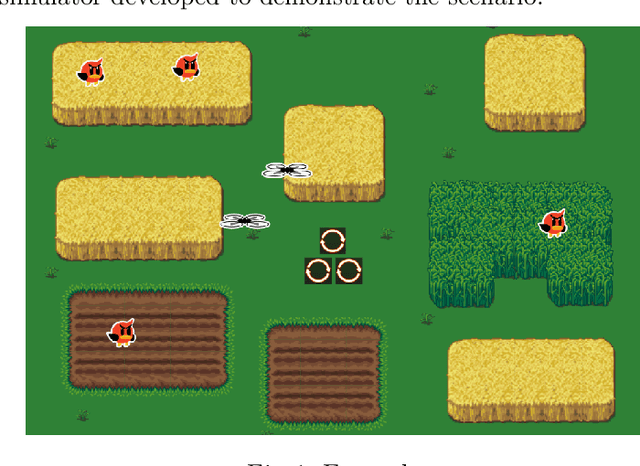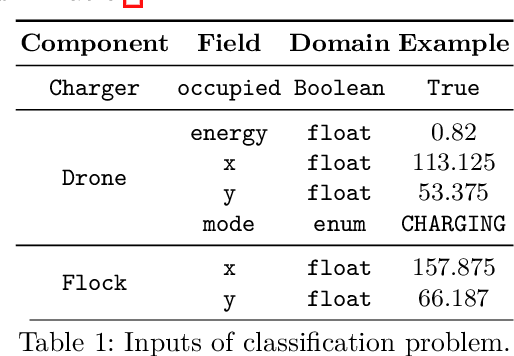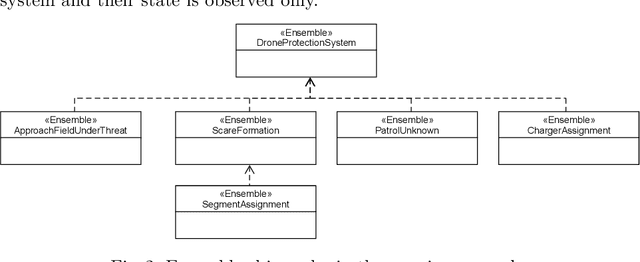Tomáš Bureš
Online ML Self-adaptation in Face of Traps
Sep 11, 2023Abstract:Online machine learning (ML) is often used in self-adaptive systems to strengthen the adaptation mechanism and improve the system utility. Despite such benefits, applying online ML for self-adaptation can be challenging, and not many papers report its limitations. Recently, we experimented with applying online ML for self-adaptation of a smart farming scenario and we had faced several unexpected difficulties -- traps -- that, to our knowledge, are not discussed enough in the community. In this paper, we report our experience with these traps. Specifically, we discuss several traps that relate to the specification and online training of the ML-based estimators, their impact on self-adaptation, and the approach used to evaluate the estimators. Our overview of these traps provides a list of lessons learned, which can serve as guidance for other researchers and practitioners when applying online ML for self-adaptation.
Ensemble-based modeling abstractions for modern self-optimizing systems
Sep 11, 2023Abstract:In this paper, we extend our ensemble-based component model DEECo with the capability to use machine-learning and optimization heuristics in establishing and reconfiguration of autonomic component ensembles. We show how to capture these concepts on the model level and give an example of how such a model can be beneficially used for modeling access-control related problem in the Industry 4.0 settings. We argue that incorporating machine-learning and optimization heuristics is a key feature for modern smart systems which are to learn over the time and optimize their behavior at runtime to deal with uncertainty in their environment.
Towards fuzzification of adaptation rules in self-adaptive architectures
Dec 17, 2021



Abstract:In this paper, we focus on exploiting neural networks for the analysis and planning stage in self-adaptive architectures. The studied motivating cases in the paper involve existing (legacy) self-adaptive architectures and their adaptation logic, which has been specified by logical rules. We further assume that there is a need to endow these systems with the ability to learn based on examples of inputs and expected outputs. One simple option to address such a need is to replace the reasoning based on logical rules with a neural network. However, this step brings several problems that often create at least a temporary regress. The reason is the logical rules typically represent a large and tested body of domain knowledge, which may be lost if the logical rules are replaced by a neural network. Further, the black-box nature of generic neural networks obfuscates how the systems work inside and consequently introduces more uncertainty. In this paper, we present a method that makes it possible to endow an existing self-adaptive architectures with the ability to learn using neural networks, while preserving domain knowledge existing in the logical rules. We introduce a continuum between the existing rule-based system and a system based on a generic neural network. We show how to navigate in this continuum and create a neural network architecture that naturally embeds the original logical rules and how to gradually scale the learning potential of the network, thus controlling the uncertainty inherent to all soft computing models. We showcase and evaluate the approach on representative excerpts from two larger real-life use cases.
Forming Ensembles at Runtime: A Machine Learning Approach
Apr 30, 2021



Abstract:Smart system applications (SSAs) built on top of cyber-physical and socio-technical systems are increasingly composed of components that can work both autonomously and by cooperating with each other. Cooperating robots, fleets of cars and fleets of drones, emergency coordination systems are examples of SSAs. One approach to enable cooperation of SSAs is to form dynamic cooperation groups-ensembles-between components at runtime. Ensembles can be formed based on predefined rules that determine which components should be part of an ensemble based on their current state and the state of the environment (e.g., "group together 3 robots that are closer to the obstacle, their battery is sufficient and they would not be better used in another ensemble"). This is a computationally hard problem since all components are potential members of all possible ensembles at runtime. In our experience working with ensembles in several case studies the past years, using constraint programming to decide which ensembles should be formed does not scale for more than a limited number of components and ensembles. Also, the strict formulation in terms of hard/soft constraints does not easily permit for runtime self-adaptation via learning. This poses a serious limitation to the use of ensembles in large-scale and partially uncertain SSAs. To tackle this problem, in this paper we propose to recast the ensemble formation problem as a classification problem and use machine learning to efficiently form ensembles at scale.
 Add to Chrome
Add to Chrome Add to Firefox
Add to Firefox Add to Edge
Add to Edge